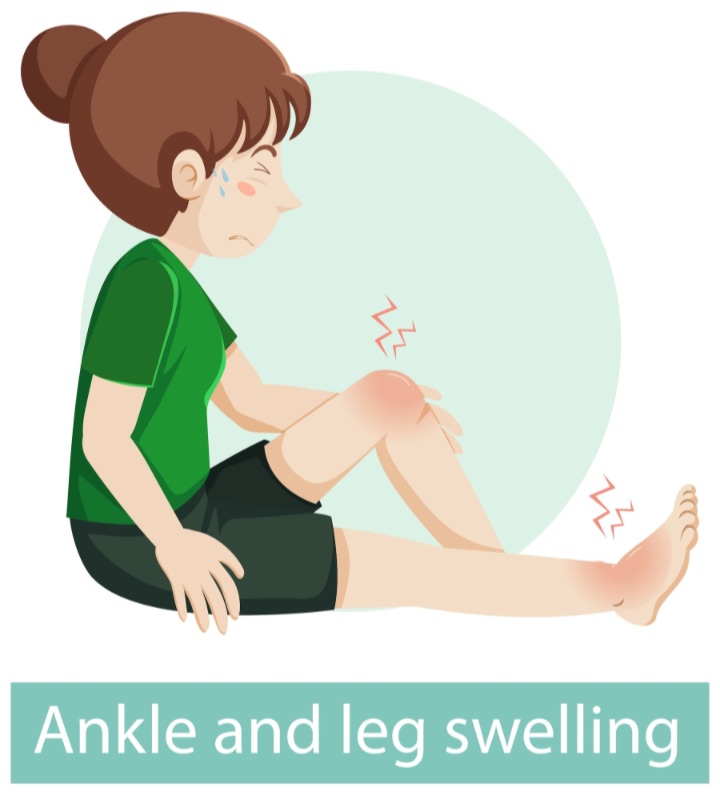If you’re feeling pain and tenderness around the joints of your body, it could be a sign of bursitis. This condition occurs when the bursae, the small fluid-filled sacs that cushion the joints, become inflamed. Bursitis can make even simple movements painful, limiting your range of motion and decreasing your quality of life.
Fortunately, a variety of bursitis treatments available can help alleviate the pain and other symptoms associated with this condition. There are many effective solutions, from conservative approaches like rest and ice to more intensive therapies like injections.

Photo Credit: Racool_studio
Bursitis is a common condition that affects the small, fluid-filled sacs known as bursae, which cushion the joints in our bodies. When these bursae become inflamed or irritated, it can lead to bursitis.
The most common symptom of bursitis is pain and tenderness in the affected area, ranging from mild to severe. Other symptoms may include:
Symptoms can vary depending on the location of the affected bursae. For example, bursitis in the shoulder may cause pain and limited range of motion, while bursitis in the hip may cause pain and difficulty walking.
Bursitis can be caused by a range of factors, including:
Some people may be more at risk for developing bursitis, such as athletes, older adults, and those with occupations that require repetitive motions.
Diagnosing bursitis can be challenging as its symptoms can be similar to other conditions such as arthritis, tendinitis, or even a fracture. However, early detection is vital for effective treatment and prevention of complications.
The diagnosis of bursitis usually starts with a physical exam and a medical history review. The doctor may also perform imaging tests like X-rays, MRI or ultrasound to rule out other possible causes of pain and inflammation.
Another diagnostic method is joint aspiration, also known as arthrocentesis. This procedure involves removing a small amount of fluid from the affected joint to test for signs of infection or inflammation. The collected fluid is analysed in a laboratory to identify the inflammation’s cause accurately.

Photo Credit: brgfx
Joint aspiration is a safe and minimally invasive procedure that can provide accurate diagnosis and guide appropriate treatment. If your doctor suspects bursitis, they may recommend this diagnostic procedure.
The earlier the diagnosis of bursitis, the more straightforward and effective the treatment. Therefore, you must consult a healthcare professional if you experience bursitis symptoms, such as joint pain, redness, stiffness, or swelling.
Bursitis can be a painful and debilitating condition, but several treatment options are available to manage and relieve its symptoms. Bursitis treatment methods can be conservative or more intensive, depending on the severity of the condition and the patient’s overall health.
It is important to note that bursitis treatment plans may vary depending on the individual and their specific condition. It is recommended to consult with a healthcare professional to develop a personalized treatment plan.

Photo Credit: diana.grystku
Bursitis can be a painful condition that disrupts your daily activities, but taking a few preventive measures can reduce your risk of developing it. Here are some lifestyle changes and precautions you can take to prevent bursitis:
If you are experiencing pain or discomfort in your joints, seeking medical attention to determine the underlying cause is important. Early detection of bursitis can help prevent more serious complications and allow for a quicker recovery.
While seeking medical treatment for bursitis is important, managing the condition on your own is just as crucial. Below are some self-care strategies and long-term strategies that can help manage bursitis:
Establishing a daily routine that includes proper posture, regular stretching, and exercises that strengthen the muscles around the affected joint can help alleviate pain and prevent bursitis from recurring.

Photo Credit: jcomp
Minimising repetitive movements or actions that pressure the affected joint can help decrease inflammation and reduce pain. For example, if you have bursitis in your shoulder, try using your non-dominant hand to perform tasks that typically require reaching or lifting.
Alternating between heat and cold therapy can help reduce inflammation and alleviate pain. Apply a cold compress to the affected area for 20 minutes, then apply a warm compress for another 20 minutes. Repeat as needed throughout the day.
Excess weight can put additional stress on the joints, aggravating bursitis symptoms. Maintaining a healthy weight through regular exercise and a balanced diet can help manage bursitis in the long term.
Slouching or hunching over can exacerbate bursitis symptoms in the shoulders and neck. Maintaining good posture—keeping your shoulders down and back—can help ease pain and prevent bursitis from progressing.
Incorporating these self-care strategies into your daily routine can help manage bursitis and prevent the condition from worsening. It’s important to remember that while self-care can be effective, it should not replace medical treatment or advice from a healthcare professional. Consult with your doctor for personalised recommendations on managing your bursitis.
Common symptoms of bursitis include pain, swelling, tenderness, and limited range of motion in the affected joint.
Bursitis is often caused by repetitive motions, joint overuse, trauma, or infection.
Bursitis is typically diagnosed through a physical examination and medical history review. Additional tests such as imaging scans may be done to confirm the diagnosis.
Treatment options for bursitis range from conservative approaches such as rest, ice, pain medications, and physical therapy, to more advanced therapies like injections or surgery in severe cases.
You can prevent bursitis by taking precautions such as using proper technique during physical activities, taking regular breaks, and maintaining a healthy lifestyle.
Managing bursitis at home involves self-care techniques like resting, applying ice or heat, and doing gentle exercises to improve strength and flexibility. Long-term strategies may include lifestyle changes to reduce stress on the joints and ongoing physical therapy.